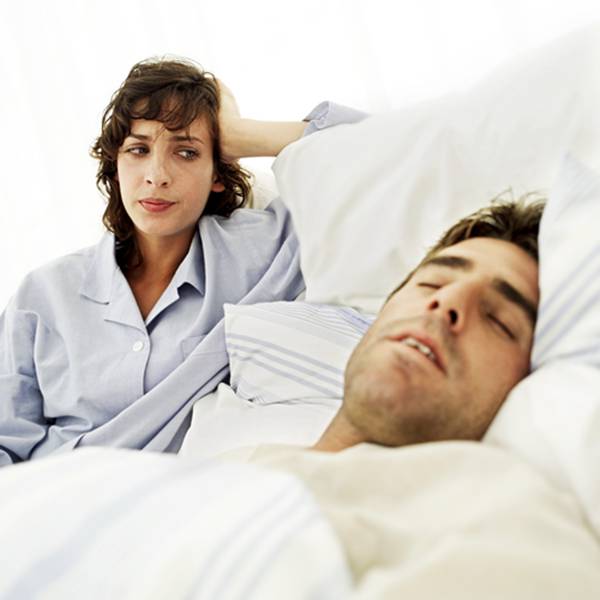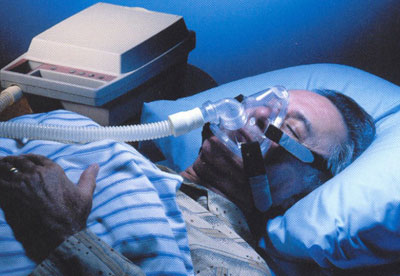
Sleep apnea is a common and severely under diagnosed disorder that is marked by continual cessations in breathing, with pauses lasting for 10-20 seconds, potentially hundreds of times a night. This disorder in your breathing interrupts your natural sleep rhythm. Statistically, the condition is most prevalent in men and women between the ages of 30 and 60, with 9% of men and 4% of women being diagnosed with it. Often, a family member notices the pauses in breathing, as it is difficult for a doctor to diagnose this disorder during a routine office visit.

There are actually three types of sleep apnea:
1. Obstructive sleep apnea is the most common type, occurring when the throat muscles relax,
2. Central sleep apnea occurs when appropriate signals are not sent from your brain to the muscles that control your breathing,
3. Complex Sleep Apnea is a combination of both types of sleep apnea.
The cause of sleep apnea varies with different individuals. Typically, the cause of sleep apnea is the relaxation of the throat muscles more than what is considered normal. Some people, children included, have large tonsils or a larger-than-average tongue that obstructs the opening of the windpipe. Obesity is a major factor contributing factor in Obstructive Sleep Apnea as well, as fat tissue can actually make the wall of the windpipe thicker, which narrows the opening. For some people, another possible source of trouble is the skeletal shape of their head and neck, which may cause a smaller airway size. Additionally, as people age the brain signals sometimes lose the ability to keep the throat muscles stiff at night, which can cause the airway to narrow or even collapse.
Approximately 50% of people with sleep apnea have essential hypertension, meaning high blood pressure, as well as a greater risk of plaque build-up in arteries, which increases the risk of a heart attack or stroke. Depression and diabetes are also common physiological effects of sleep apnea. Furthermore, sleep apnea patients are 6 times more likely to be involved in an automobile accident.
It’s important to be able to identify the signs of sleep apnea. While it isn’t easy to diagnose yourself, considering you’re asleep when the disorder is affecting you, there are key signs to look out for.

The symptoms of sleep apnea include:
1. Daytime sleepiness, also called hypersomnia
2. Waking abruptly short of breath is a symptom of central sleep apnea
3. Headaches in the morning
4. Having difficulty concentrating, plus memory or learning problems
5. Irritability, depression, mood swings or personality changes are a significant sign
6. Frequent urination at night
7. Waking up with a dry or sore throat
8 Loud snoring is a common symptom of obstructive sleep apnea
If you suspect that you may have sleep apnea, it is imperative to see a physician. To give your sleep specialist a more comprehensive view of your sleep patterns, keep a sleep journal for a couple of weeks prior to your appointment.
There are several studies that help diagnose sleep apnea, which is typically treated by a sleep specialist like an online sleep apnea doctor. Nocturnal polysomnography is the most common test for sleep apnea and is generally conducted at a sleep center. Sleep lab technicians attach nodes to your body that monitor your heart, lungs, brain activity, oxygen levels, and eye and extremity movements.
There is also a portable monitoring device for use in your home. It has the ability to measure your blood oxygen level, airflow, breathing patterns and heart rate. Abnormal results will necessitate in some prescribed therapy.
If you opt not to proceed with the lab recommended treatment, some self-help methods aimed to treat sleep apnea include weight loss, smoking cessation, and avoiding alcohol, caffeine or sleep medication before bed.
Once you are diagnosed with moderate to severe sleep apnea, often a CPAP (Continuous Positive Airway Pressure) mask is prescribed. It fits snugly over your nose and mouth, delivering constant air to keep your airway open.
There is also an oral appliance designed to keep your throat open by pushing your jaw forward and may be effective for mild sleep apnea and snoring. In addition, special pillows are available to keep you off your back during sleep and in case all else fails, surgery can be done to remove excessive tissue from the throat and nose.
Whichever method is appropriate for your individual situation, the improvement in the quality of your life is well worthwhile.

Hello Yourhealthblog,
This might be off topic, however, Sleep apnea is a very serious sleep disorder affecting over 18 million American sleepers. It is a condition in which a person’s breathing is continuously interrupted during sleep. The cessation of breathing can last from 10 seconds to as long as 60 seconds and occur more than a few times a night. If you find yourself unable to breathe properly at night and wake up gasping for breath, it is likely that you are suffering from sleep apnea.
Cheers
Dear Yourhealthblog,
Thanks for that, Lately i have noticed how cloudy and foggy headed i feel. I occasionally get lightheaded and dizzy. Plus my family says i snore much louder than usual. I also never feel satisfied from a good good nights sleep. Please help. Oh yes…..i am somewhat overweight.
Wishes